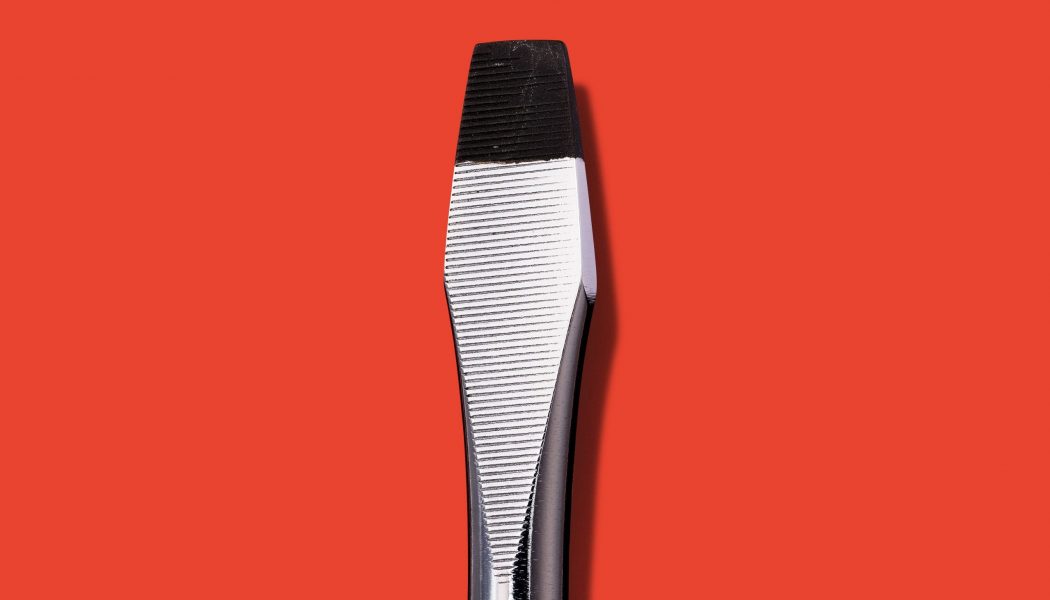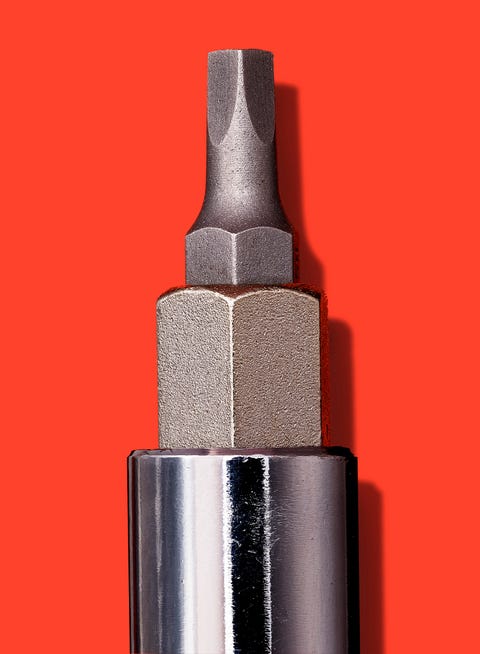The history of the screw, and by inevitable implication, the screwdriver, is complicated. In One Good Turn: A Natural History of the Screwdriver and the Screw, Witold Rybczynski, professor of urbanism at the University of Pennsylvania, traces the metal fasteners to the 15th century, though it wasn’t until the early 18th century that the screw became common. Around then, gunsmiths developed purpose-built tournevis (French for “screwdriver”) for use in the intricate workings of early firearms. A century later, when screws could be mass-produced, factories cranked out accompanying screwdrivers.
According to the American Society of Mechanical Engineers, toolmaker Joseph Whitworth devised Britain’s first standardized screw in 1841. American engineer William Sellers did the same for his country in 1864. Standardized screw heads and screwdrivers emerged later. Early screws used either a slotted head or some sort of square or octagonal drive. As screw production increased, slotted drives became standard. But if you’ve ever cammed (slipped) a screw-head slot, you know why it’s not the only design. Enter Peter Lymburner Robertson. The official history from the Robertson Screw Company says that Robertson, a Canadian inventor and industrialist, cut himself when the blade slipped during a demonstration of a new spring-loaded screwdriver, forcing an epiphany that the world needed a new type of screw. Robertson designed a fastener that featured a square socket tapering towards a truncated pyramidal bottom, winning a Canadian patent for his work in 1907. It’s a brilliant design—Robertson screws won’t easily cam out, and the socket shape helps center the screwdriver, making one-handed operation easy.
The Robertson was perfect for the burgeoning auto industry. Ford began using it to assemble Model Ts at its Windsor, Ontario, plant, where the screw’s time-saving qualities reduced costs by a significant $2.60 per car. But unless you’re Canadian, there’s a good chance you’ve never heard of Robertson screws. That’s because Henry Ford wanted to use Robertsons in all of his plants, and he wanted more control over how they were made. Robertson, by most accounts a stubborn man, wouldn’t agree. No deal was struck, and the Canadian lost an important part of his business. Meanwhile, other engineers worked on their own types of screw heads.
According to Rybczynski, the one that stuck came from inventor John P. Thompson and businessman Henry F. Phillips. A Phillips screw offers many of the benefits of a Robertson and can be driven by a traditional slotted screwdriver in a pinch. Phillips licensed his design to the giant American Screw Company, which got General Motors to use the screw in the 1936 Cadillac. Within the decade, almost all automakers were using Phillips screws.
A Phillips is, arguably, not a better screw than a Robertson. Consumer Reports once wrote that “compared with slotted and Phillips-head screwdrivers, the Robertson worked faster, with less cam-out.” However, cam-out was good for automakers increasingly relying on automation, as it meant screws wouldn’t be overtightened. Today the Phillips is the standard, except in Canada, where the Robertson remains popular, and in Japan, which has its own cruciform screw, the Japanese Industrial Standard.
Next time you strip out a Phillips, shake your fist at Henry Ford.
This content is created and maintained by a third party, and imported onto this page to help users provide their email addresses. You may be able to find more information about this and similar content at piano.io









